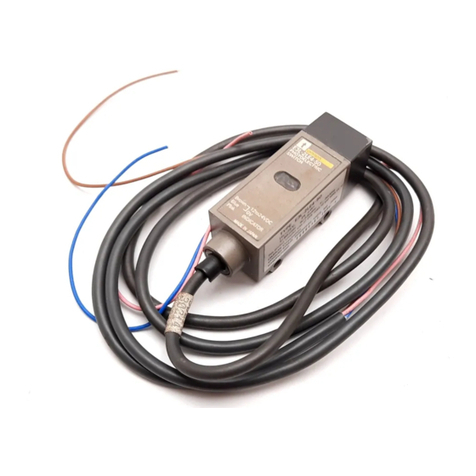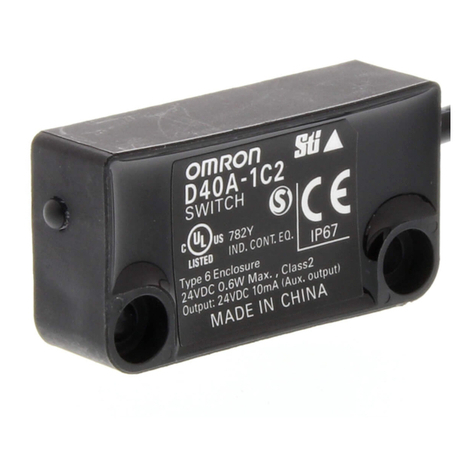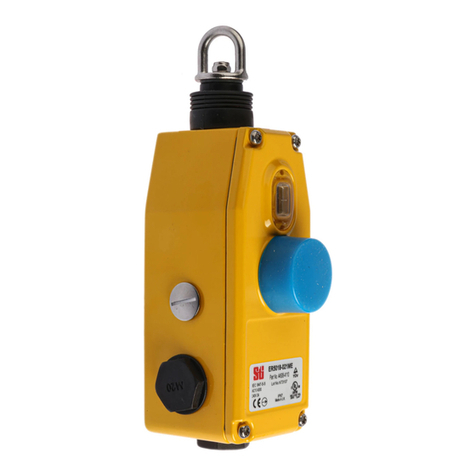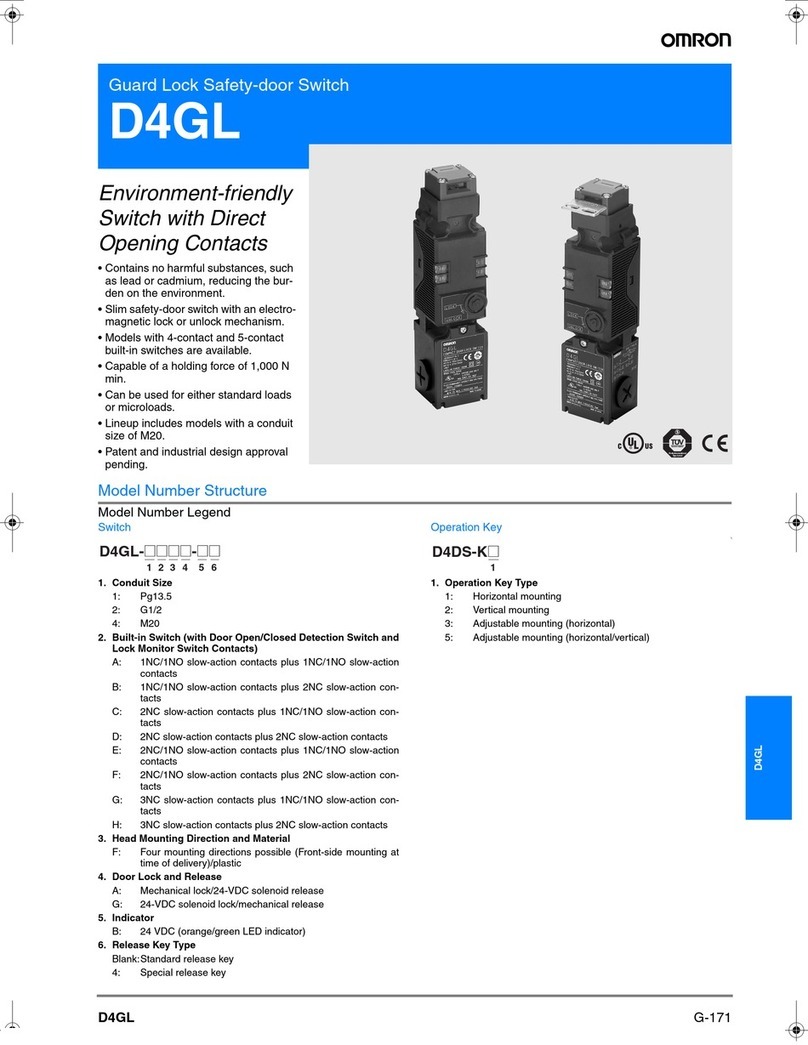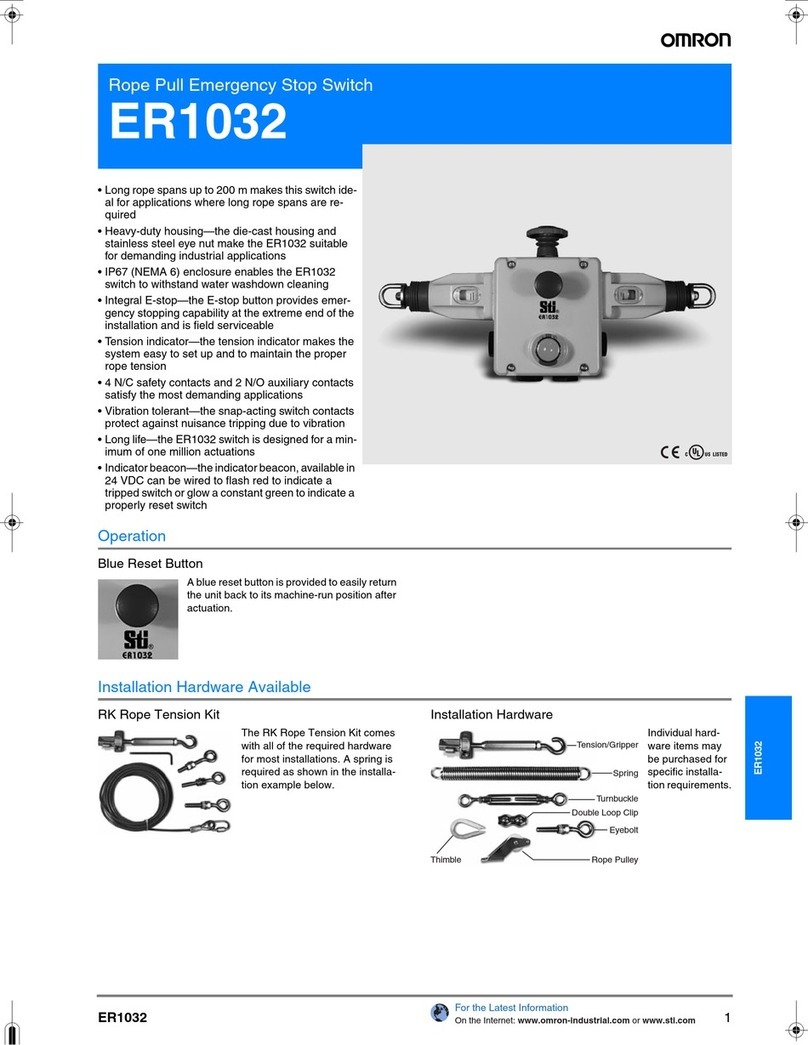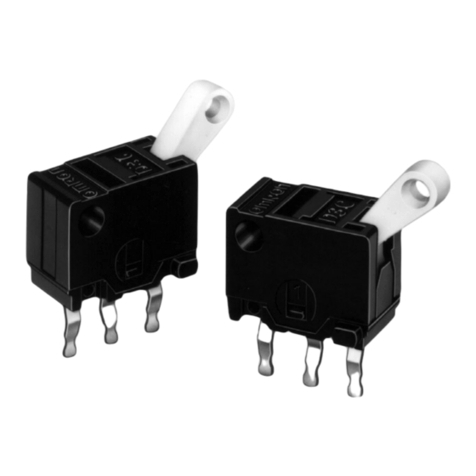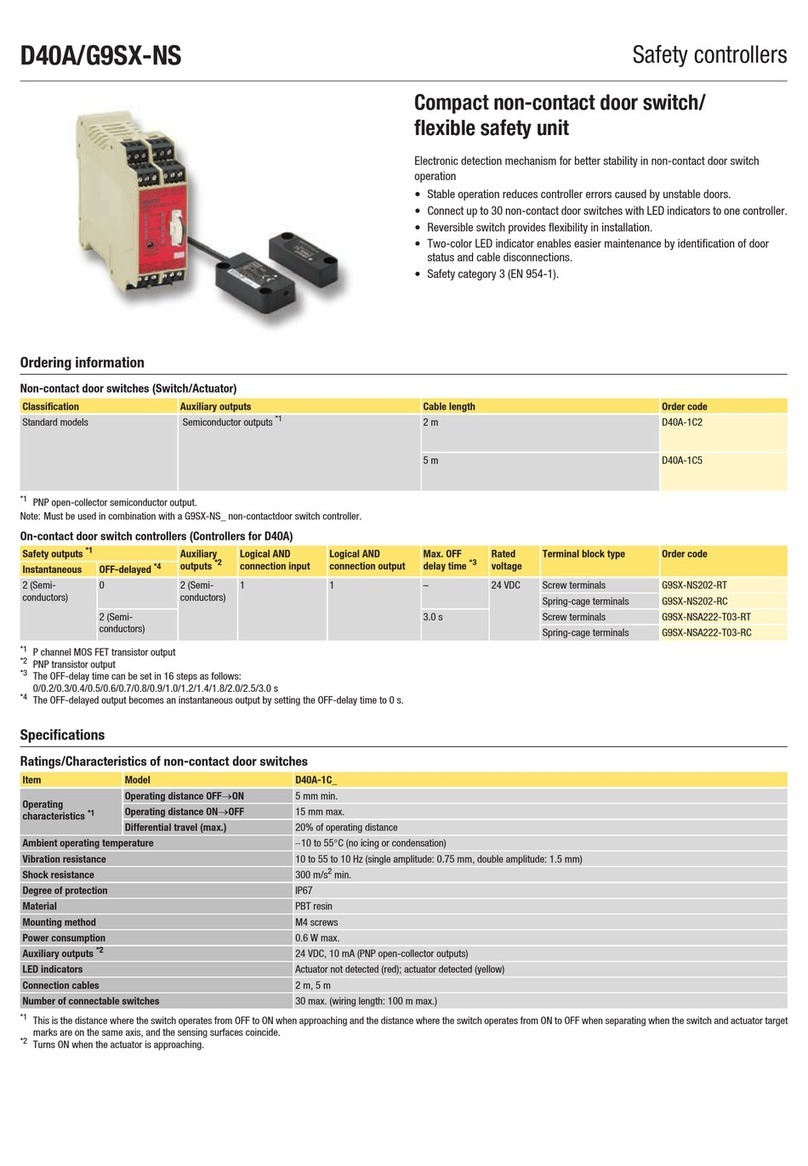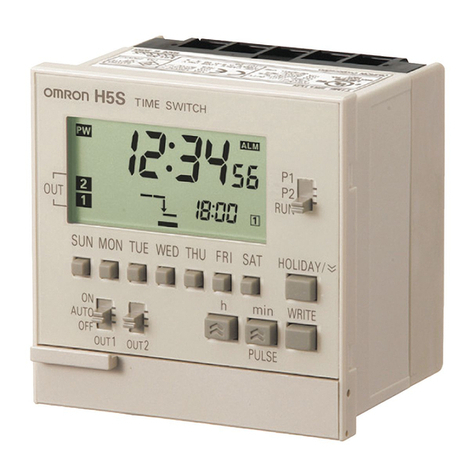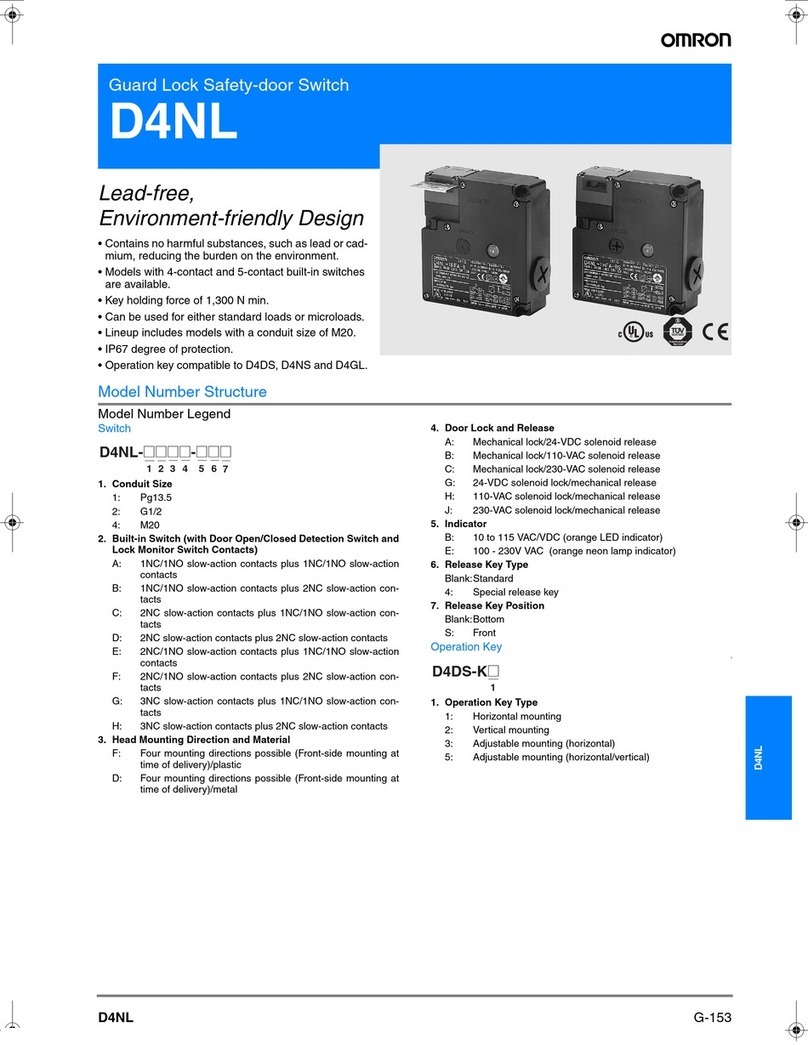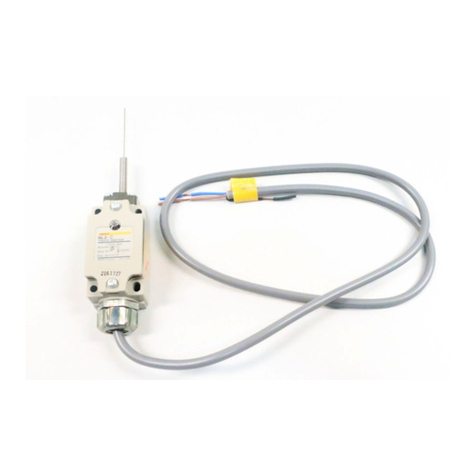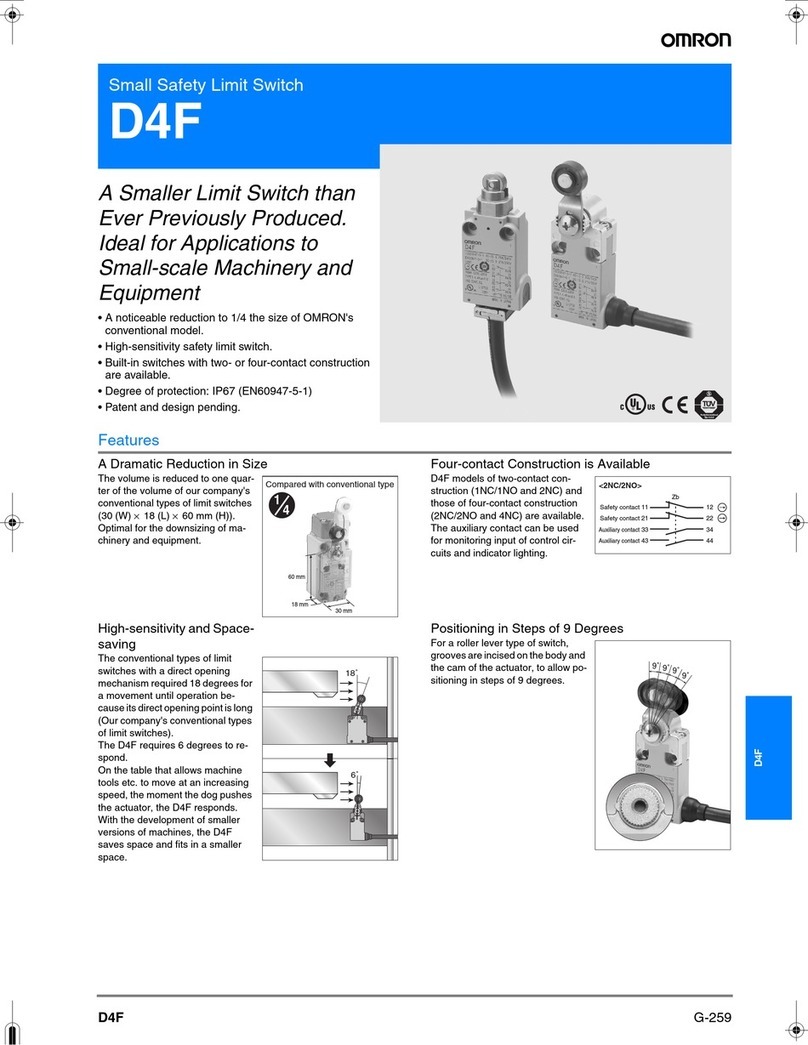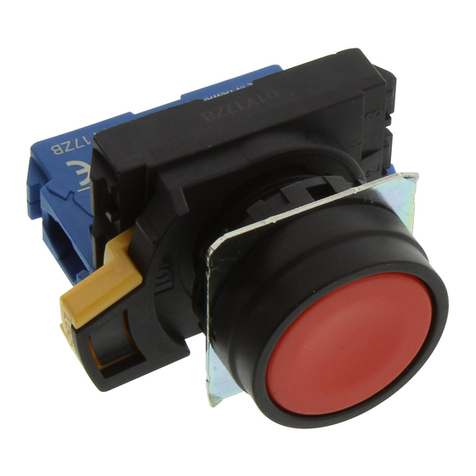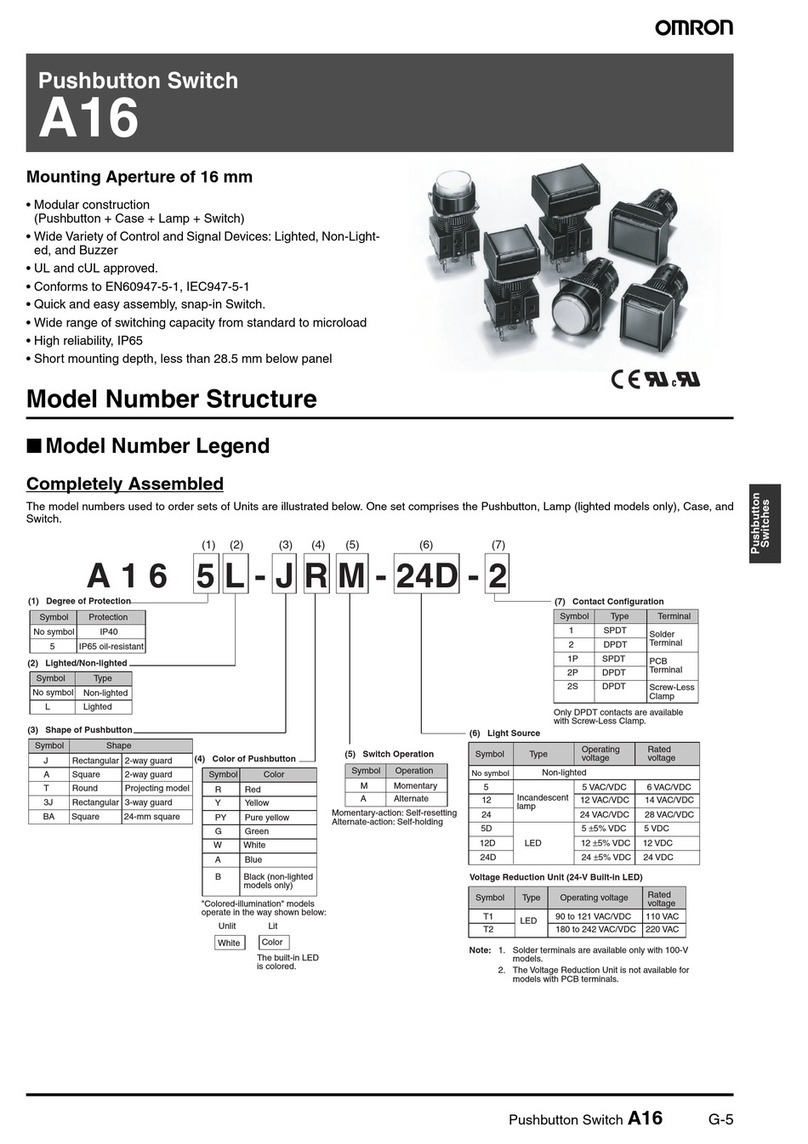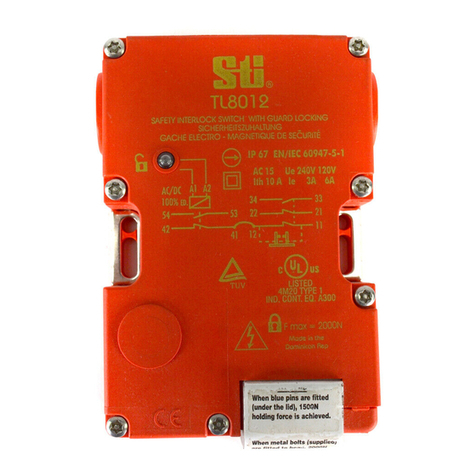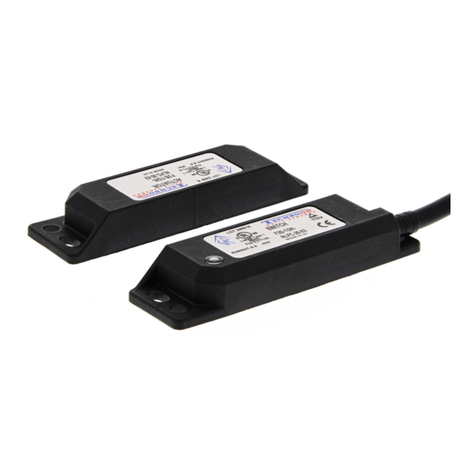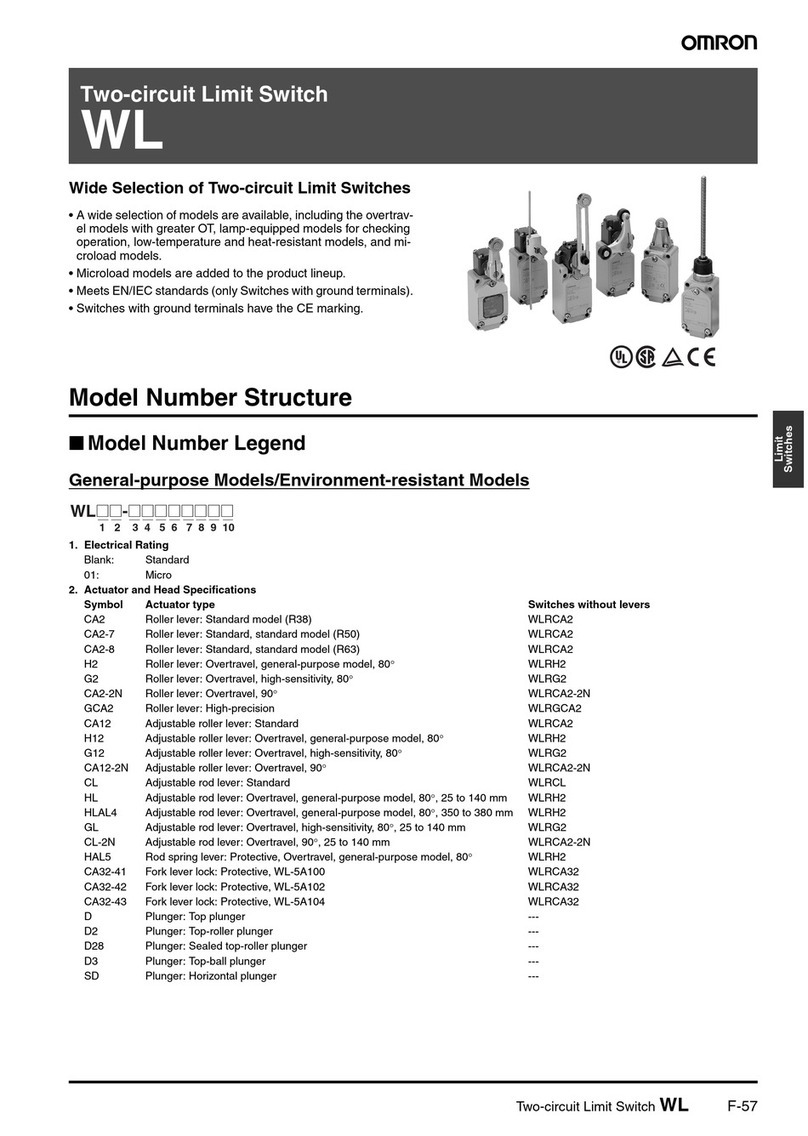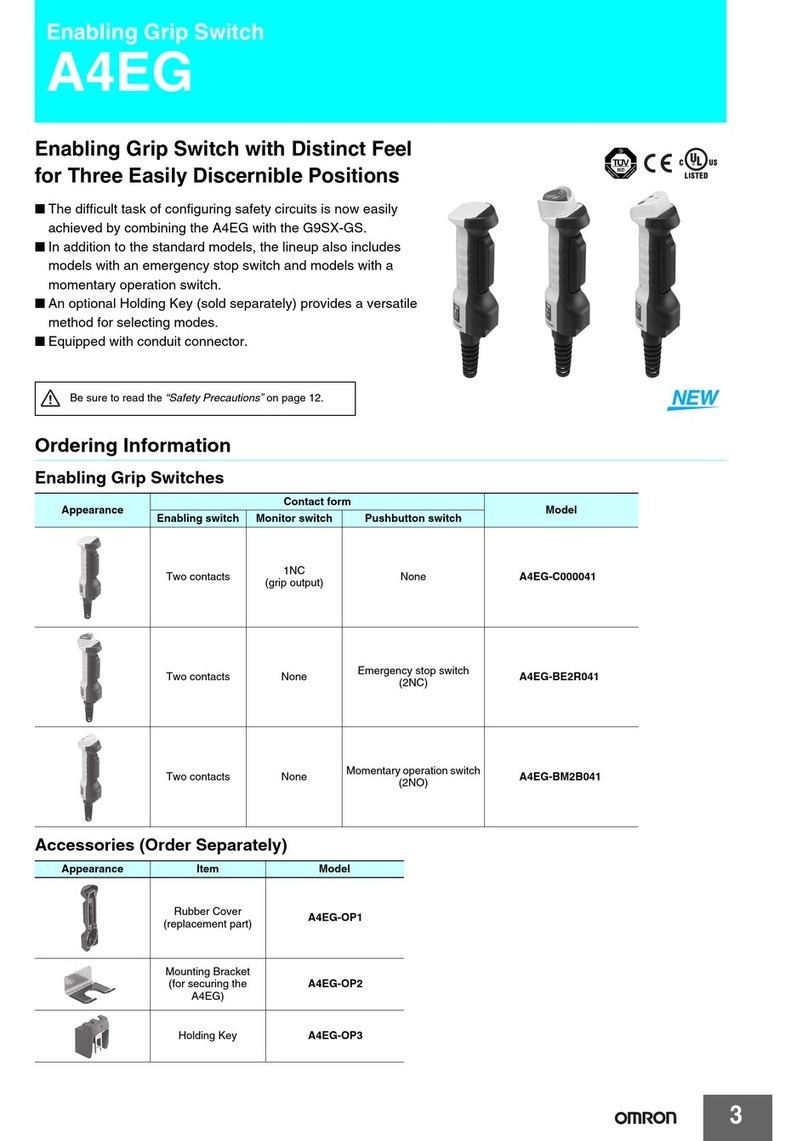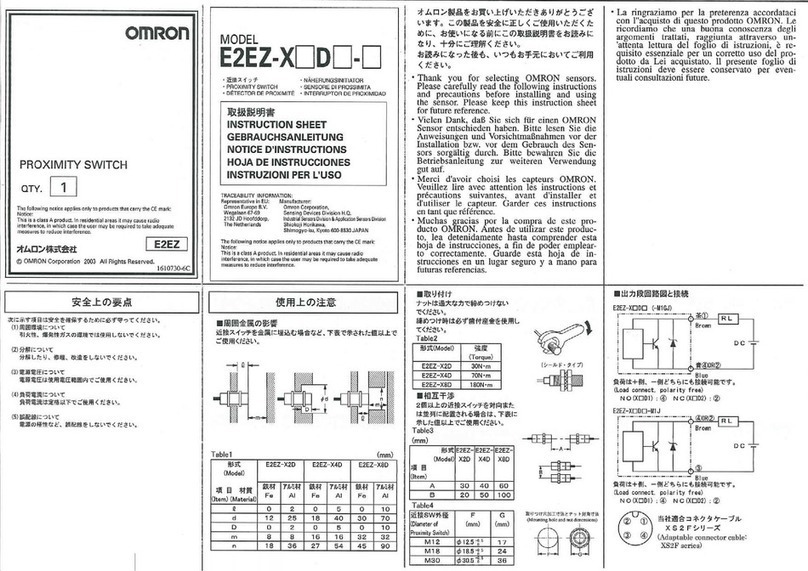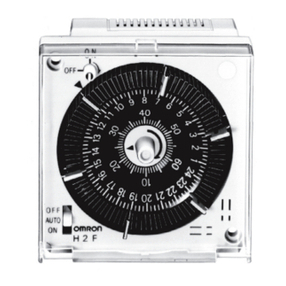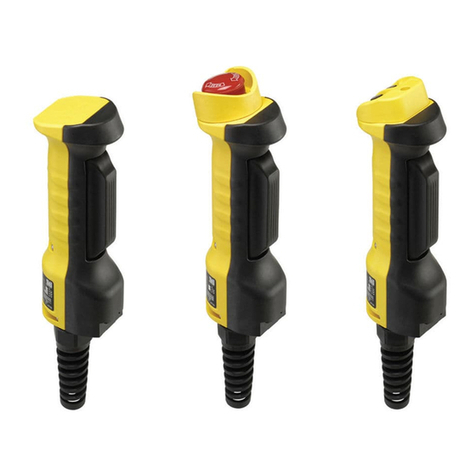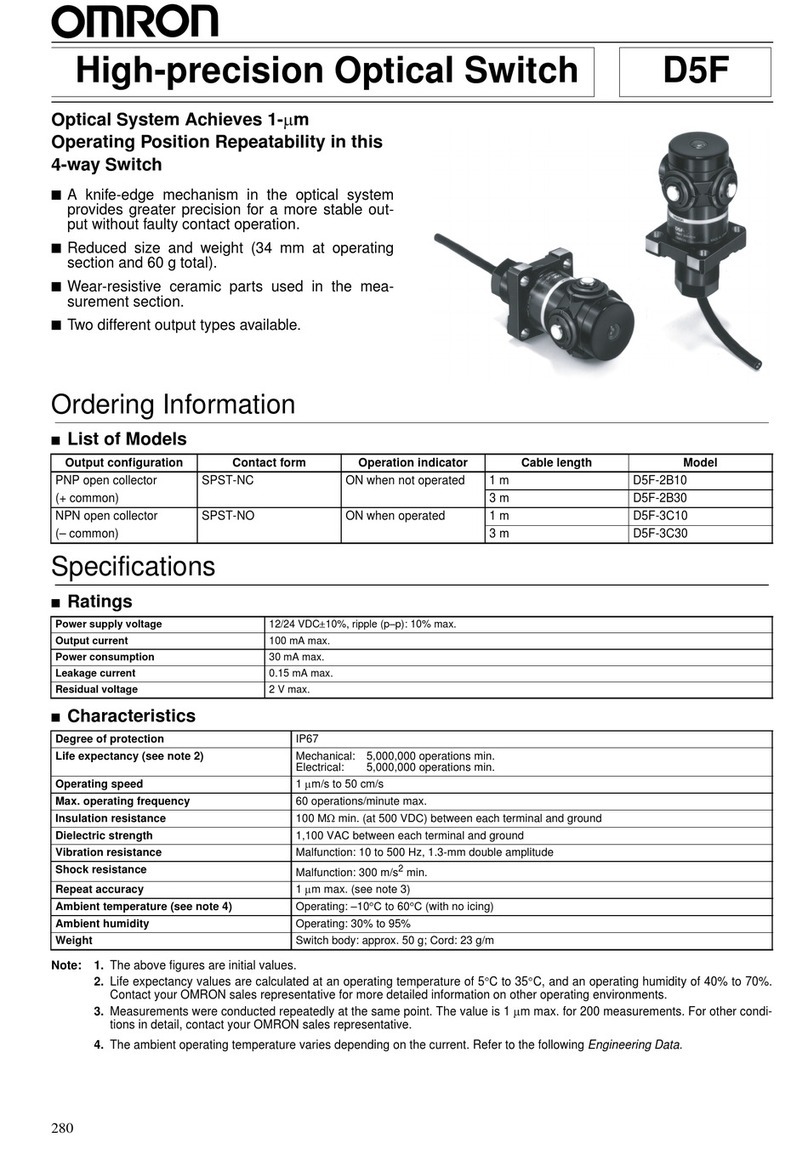No. Area No. Item Page
3 Storage Environment
7 Switch Trouble and Corrective Action 31
Using Switches
•When switches are actually used, unforeseen accidents may
occur. Before using a switch, perform all possible testing in
advance.
•Unless otherwise specified, ratings and performances given in
this catalog are for standard test conditions (i.e., 15 to 35C,
25% to 75% humidity, and 86 to 106 kPa atmospheric pressure).
When performing testing in the actual application, always use
the same conditions as will be used in actual usage conditions for
both the load and the operating environment.
•Reference data provided in this catalog represents actual
measurements from production samples in graph form. All
reference data values are nominal.
•All ratings and performance values provided in this catalog are
the results of a single test each rating and performance value
therefore may not be met for composite conditions.
Selecting Correct Switch
Select an appropriate switch for the operating environment and load
conditions.
•Use the Selection Guide to select a suitable switch for the rated
current, operating load, actuator type, and operating environ-
ment.
•It is not recommended to use a switch for a large current to switch
a micro current, in terms of contact reliability. Select a switch that
is suitable for the current actually being switched.
•Use a sealed switch in environments subject to water, other
liquids and excessive dirt or dust.
Electrical Conditions
Load
The switching capacity of a switch significantly differs depending on
whether the switch is used to break an alternating current or a direct
current. Be sure to check both the AC and DC ratings of a switch.
The control capacity will drop drastically if it is a DC load. This is be-
cause a DC load, unlike an AC load, has no current zero cross point.
Therefore, if an arc is generated, it may continue for a comparatively
long time. Furthermore, the current direction is always the same,
which results in contact relocation phenomena, and the contacts
hold each other with ease and will not separate if the surfaces of the
contacts are uneven.
If the load is inductive, counter-electromotive voltage will be gener-
ated. The higher the voltage is, the higher the generated energy is,
which increase the abrasion of the contacts and contact relocation
phenomena. Make sure to use a switch within the rated conditions.
If a switch is used for switching both micro and high-capacity loads,
be sure to connect relays suitable to the loads.
The rated loads of a switch are according to the following conditions:
Inductive Load: A load having a minimum power factor of 0.4 (AC) or
a maximum time constant of 7 ms (DC).
Lamp Load: A load having an inrush current ten times the
steady-state current.
Motor Load: A load having an inrush current six times the steady-
state current.
Note: It is important to know the time constant (L/R) of an induc-
tive load in a DC circuit.
Inrush Current
i (Inrush current)
io (Steady-
state current)
I
(A)
t
Application of Switch to Electronic Circuits
The Basic switch may have contact bouncing or chattering in
switching, thus generating noise or pulse signals that may interfere
the operation of electronic circuits or audio equipment. To prevent
this, take the following countermeasures.
•Design the circuits so that they include appropriate CR circuits to
absorb noise or pulse signals.
•Use switches with gold-plated contacts for micro loads, which
are more resistive to environmental conditions.
Switches for Micro Loads
If a switch for a general load is used for switching a micro load, it may
cause contact failures. Be sure to select a switch within the permis-
sible range. Even if a switch for a micro load is used within the per-
missible range, the inrush current of the load may deteriorate the
contacts, thus decreasing the durability of the switch. Therefore, if
necessary, insert a proper contact protective circuit.
